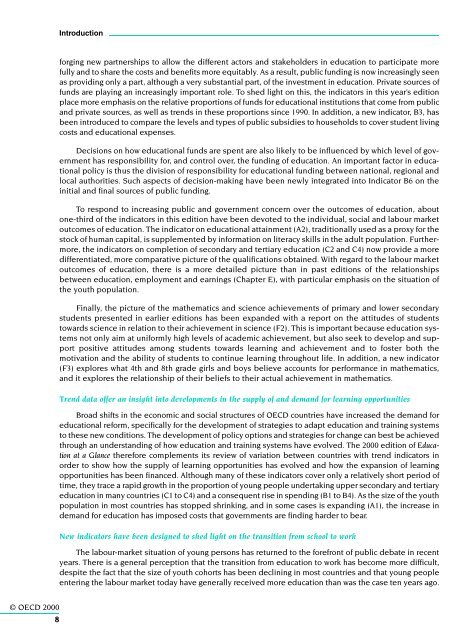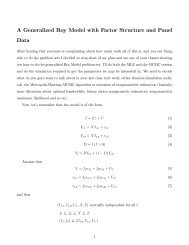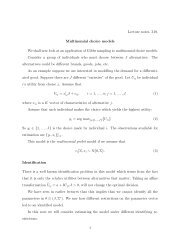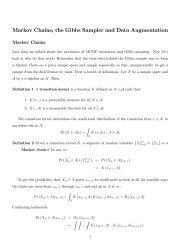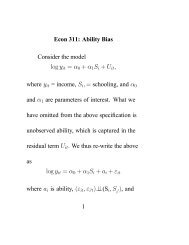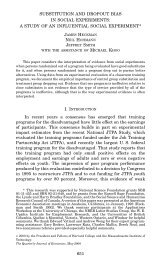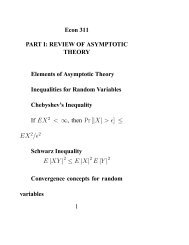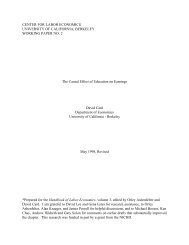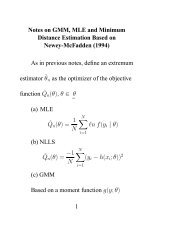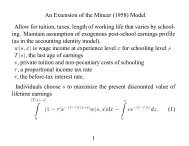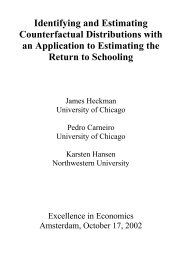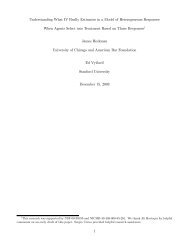OECD (2000)
OECD (2000)
OECD (2000)
Create successful ePaper yourself
Turn your PDF publications into a flip-book with our unique Google optimized e-Paper software.
Introduction<br />
forging new partnerships to allow the different actors and stakeholders in education to participate more<br />
fully and to share the costs and benefits more equitably. As a result, public funding is now increasingly seen<br />
as providing only a part, although a very substantial part, of the investment in education. Private sources of<br />
funds are playing an increasingly important role. To shed light on this, the indicators in this year’s edition<br />
place more emphasis on the relative proportions of funds for educational institutions that come from public<br />
and private sources, as well as trends in these proportions since 1990. In addition, a new indicator, B3, has<br />
been introduced to compare the levels and types of public subsidies to households to cover student living<br />
costs and educational expenses.<br />
Decisions on how educational funds are spent are also likely to be influenced by which level of government<br />
has responsibility for, and control over, the funding of education. An important factor in educational<br />
policy is thus the division of responsibility for educational funding between national, regional and<br />
local authorities. Such aspects of decision-making have been newly integrated into Indicator B6 on the<br />
initial and final sources of public funding.<br />
To respond to increasing public and government concern over the outcomes of education, about<br />
one-third of the indicators in this edition have been devoted to the individual, social and labour market<br />
outcomes of education. The indicator on educational attainment (A2), traditionally used as a proxy for the<br />
stock of human capital, is supplemented by information on literacy skills in the adult population. Furthermore,<br />
the indicators on completion of secondary and tertiary education (C2 and C4) now provide a more<br />
differentiated, more comparative picture of the qualifications obtained. With regard to the labour market<br />
outcomes of education, there is a more detailed picture than in past editions of the relationships<br />
between education, employment and earnings (Chapter E), with particular emphasis on the situation of<br />
the youth population.<br />
Finally, the picture of the mathematics and science achievements of primary and lower secondary<br />
students presented in earlier editions has been expanded with a report on the attitudes of students<br />
towards science in relation to their achievement in science (F2). This is important because education systems<br />
not only aim at uniformly high levels of academic achievement, but also seek to develop and support<br />
positive attitudes among students towards learning and achievement and to foster both the<br />
motivation and the ability of students to continue learning throughout life. In addition, a new indicator<br />
(F3) explores what 4th and 8th grade girls and boys believe accounts for performance in mathematics,<br />
and it explores the relationship of their beliefs to their actual achievement in mathematics.<br />
Trend data offer an insight into developments in the supply of and demand for learning opportunities<br />
Broad shifts in the economic and social structures of <strong>OECD</strong> countries have increased the demand for<br />
educational reform, specifically for the development of strategies to adapt education and training systems<br />
to these new conditions. The development of policy options and strategies for change can best be achieved<br />
through an understanding of how education and training systems have evolved. The <strong>2000</strong> edition of Education<br />
at a Glance therefore complements its review of variation between countries with trend indicators in<br />
order to show how the supply of learning opportunities has evolved and how the expansion of learning<br />
opportunities has been financed. Although many of these indicators cover only a relatively short period of<br />
time, they trace a rapid growth in the proportion of young people undertaking upper secondary and tertiary<br />
education in many countries (C1 to C4) and a consequent rise in spending (B1 to B4). As the size of the youth<br />
population in most countries has stopped shrinking, and in some cases is expanding (A1), the increase in<br />
demand for education has imposed costs that governments are finding harder to bear.<br />
New indicators have been designed to shed light on the transition from school to work<br />
The labour-market situation of young persons has returned to the forefront of public debate in recent<br />
years. There is a general perception that the transition from education to work has become more difficult,<br />
despite the fact that the size of youth cohorts has been declining in most countries and that young people<br />
entering the labour market today have generally received more education than was the case ten years ago.<br />
© <strong>OECD</strong> <strong>2000</strong><br />
8


